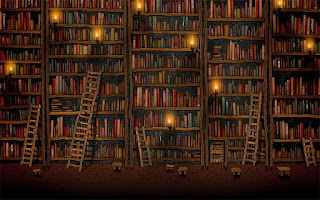Genres: Literature is categorized into different genres, such as fiction, non-fiction, drama, poetry, and others. Each genre has its own unique characteristics and conventions that shape the way stories are told and ideas are expressed.
Literary Devices: Authors use various literary devices to enhance their writing and convey meaning. These devices include metaphors, similes, symbolism, imagery, foreshadowing, irony, alliteration, and many more. They add depth, creativity, and nuance to the written word.
Themes: Literature often explores universal themes that reflect the human condition, such as love, friendship, loss, identity, power, justice, and morality. Themes provide insights into the complexities of life and offer readers opportunities for reflection and introspection.
Characterization: Characters play a central role in literature. Authors develop their characters through physical descriptions, actions, dialogue, and thoughts. Complex and well-developed characters captivate readers and contribute to the narrative's depth and emotional resonance.
Plot and Narrative: Literature typically follows a narrative structure with elements of exposition, rising action, climax, falling action, and resolution. The plot refers to the sequence of events that unfold in the story. Authors use plot twists, suspense, and pacing to engage readers and create a compelling narrative.
Symbolism: Symbolism is a powerful literary technique where objects, actions, or characters represent abstract ideas or themes. Symbolic elements can deepen the meaning of a story and offer multiple layers of interpretation for readers.
Cultural and Historical Context: Literature often reflects the cultural, social, and historical contexts in which it is created. It provides insights into different time periods, societies, and cultural practices, allowing readers to gain a deeper understanding of specific eras or regions.
Literary Movements: Literature is influenced by various literary movements or periods, characterized by specific styles, themes, and artistic philosophies. Examples include the Renaissance, Romanticism, Modernism, and Postmodernism. Understanding these movements helps situate works of literature within their artistic and historical contexts.
Literary Criticism: Literary criticism involves the analysis and interpretation of literary works. Critics examine themes, symbols, language, and cultural implications to provide insights and evaluations of the text. Literary criticism contributes to the ongoing dialogue and appreciation of literature.
Impact and Legacy: Literature has a profound impact on individuals and societies. It can entertain, inspire, challenge perspectives, and evoke emotions. Literary works often have a lasting legacy, influencing subsequent generations of writers and contributing to the collective cultural heritage.
Literary Canon: The literary canon refers to a collection of works that are considered to be of significant literary merit and have had a lasting impact on literature. These works are often studied and celebrated as exemplary pieces within the literary tradition.
Intertextuality: Intertextuality refers to the interconnectedness of texts, where one work of literature references, alludes to, or influences another. Through intertextuality, authors can create layers of meaning, engage in dialogue with other works, and contribute to the ongoing literary conversation.
Narrative Point of View: The narrative point of view determines who tells the story and from what perspective. It can be first-person (narrator as a character in the story), third-person limited (narrator focuses on the thoughts and experiences of a single character), or third-person omniscient (narrator has access to the thoughts and experiences of multiple characters).
Literary Criticism Schools: Various schools of literary criticism have emerged over time, offering different approaches to the analysis and interpretation of literature. Examples include formalism, structuralism, poststructuralism, feminism, psychoanalysis, and postcolonialism. These approaches provide different lenses through which literature can be understood and appreciated.
Literary Awards: Literary awards recognize outstanding works of literature and celebrate their literary achievements. Examples include the Nobel Prize in Literature, Pulitzer Prize, Booker Prize, National Book Award, and many more. These awards highlight exceptional writing and contribute to the recognition and promotion of literary talent.
Adaptations: Literature often serves as a source of inspiration for adaptations in other forms of media, such as film, television, theater, and visual arts. Adaptations can bring literary works to a wider audience, offer new interpretations, and provide a fresh perspective on familiar stories.
Literary Movements and Styles: Literature is characterized by various movements and styles that emerged during different periods. For example, realism sought to depict everyday life with accuracy, while surrealism explored the realms of the subconscious. Each movement or style represents a unique approach to storytelling and artistic expression.
Literary Journals and Magazines: Literary journals and magazines provide platforms for emerging and established writers to publish their work. They showcase a diverse range of voices, styles, and genres, fostering literary communities and contributing to the promotion of literary talent.
Oral Tradition and Folklore: Literature has its roots in oral tradition and folklore, where stories were passed down through generations by word of mouth. Folktales, legends, and myths from different cultures form a rich part of literary heritage and offer insights into cultural beliefs, values, and traditions.
Reader-Response Theory: Reader-response theory emphasizes the role of the reader in the interpretation and meaning-making process of a literary work. It recognizes that readers bring their own experiences, perspectives, and emotions to the reading experience, influencing their understanding and engagement with the text.
Literature encompasses a vast and diverse body of work, offering endless possibilities for exploration, interpretation, and enjoyment. It serves as a reflection of the human experience, provokes thought and reflection, and invites readers into worlds of imagination and creativity.
#BookLovers#Bookstagram#ClassicBooks#ContemporaryLiterature#PoetryCommunity
#ShortStories#BookRecommendations#MustRead#LiteraryFiction#BookishLife#ReadingList
#BookNerd#BookObsessed#AuthorSpotlight#BookClub
#WritingCommunity#Storytelling#LiteraryQuotes#FictionFriday#LibraryLove
#ReadMoreBooks#Bibliophile#BooksAndCoffee#BookAddict
#IndieAuthors#LiteraryAnalysis#BookReview




No comments:
Post a Comment